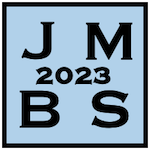Ulcerative colitis (UC) and Crohn's disease (CD) are chronic inflammatory diseases that affect the digestive tract, causing daily discomfort. Although symptoms are similar, the modes of disease propagation are different. CD spreads discontinuously and excavating along the digestive tract, while UC spreads continuously and superficially, affecting a uniform area from the rectum to different parts of the colon (see [2] and [1]). In our research work, we are interested in studying a mathematical model of inflammation caused by Inflammatory Bowel Disease that has been developed in [3] with modifications. It is a reaction-diffusion system governing the dynamics of a pathogen in interaction with immune cells. The first study focuses on the existence of propagation waves for such a system in a homogeneous medium, the second study focuses on blocking these waves in a heterogeneous medium. We will use numerical simulations to highlight these theoretical results.
Références:
[1] : Yong-Ping Ding, Yannick Ladeiro, Ian Morilla, Yoram Bouhnik, Assiya Marah, Hatem Zaag,
Dominique Cazals-Hatem, Philippe Seksik, Fanny Daniel, Jean-Pierre Hugot, et al. Integrative
network-based analysis of colonic detoxification gene expression in ulcerative colitis according
to smoking status. Journal of Crohn's and Colitis, 11(4):474–484, 2017.
[2] : Wing-Cheong Lo, Razvan I Arsenescu, and Avner Friedman. Mathematical model of the roles
of t cells in inflammatory bowel disease. Bulletin of mathematical biology, 75(9):1417–1433,
2013.
[3] : Grégoire Nadin, Eric Ogier-Denis, Ana I Toledo, and Hatem Zaag. A turing mechanism in order
to explain the patchy nature of crohn's disease. Journal of Mathematical Biology, 83(2):1–17,
2021.

 PDF version
PDF version
